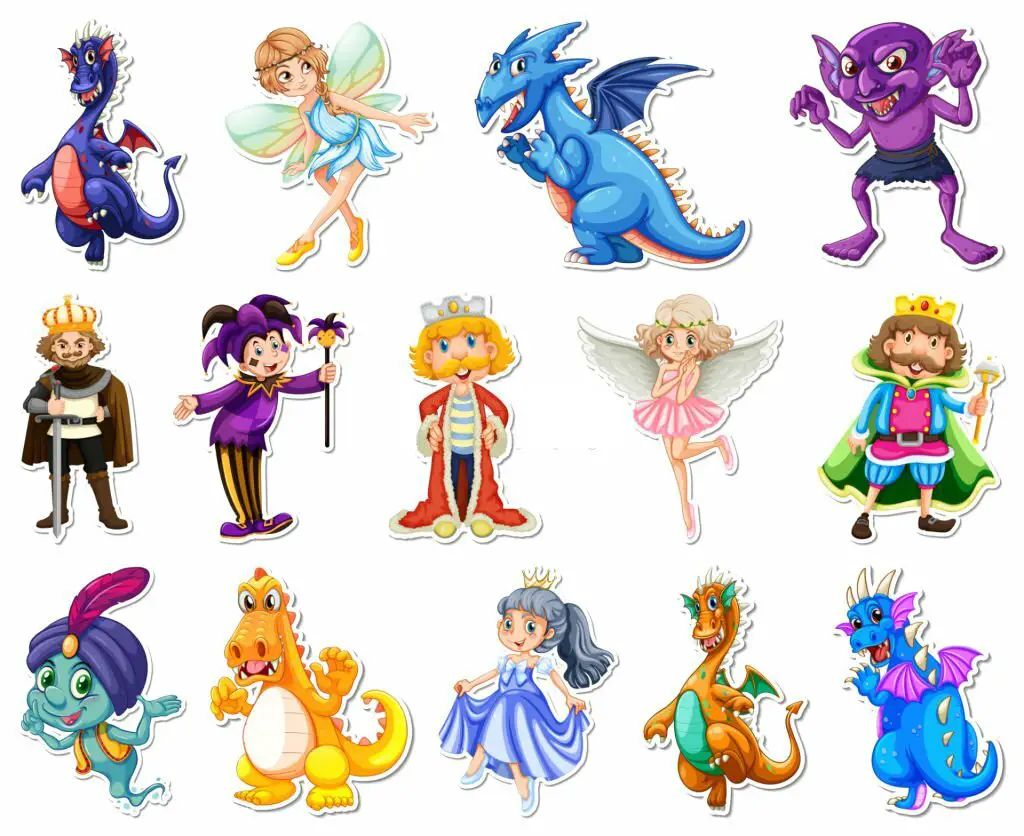Draw Fantasy Creatures: A Guide to Designing and Drawing Dragons, Unicorns, Mermaids, and More
Fantasy creatures steal the hearts of story lovers every time they show up in written content and comic books. They have captured people’s imaginations for centuries, inspiring artists, writers, and dreamers alike.
From majestic dragons to elusive unicorns and enchanting mermaids, the world of mythical beings is substantial and teeming with creative possibilities. Of course, drawing fantastic creatures can be a thrilling artistic journey, but it can also become tiring when you’re a novice.
To help you embark on this adventure, we’ve compiled 15 valuable tips for designing and drawing mythological creatures.
Research and Inspiration
Research is the cornerstone of creating captivating fantasy creatures. Immerse yourself in the rich tapestry of mythology and folklore worldwide.
Dive into ancient texts, legends, and cultural stories that feature these beings. Doing so allows you to gain a profound understanding of the diverse interpretations of these creatures.
As you learn more and become more experienced, you can add more layers to your designs and create something truly unique by drawing inspiration from different traditions and perspectives.
Start with Basic Shapes
When beginning your drawing, start with the most basic shapes, like circles, squares, and triangles.
These simple forms are the framework for your creature’s body and structure. This way lets you establish proportions and composition before diving into intricate details.
It’s akin to building the skeleton of your creation before adding flesh and clothing. Using basic shapes as your foundation allows you to control the initial design, ensuring that your creature’s anatomy remains coherent and well-proportioned. This technique is beneficial for artists creating balanced and visually pleasing fantasy creatures.
Reference Anatomy
Understanding real-world anatomy is a fundamental skill for any artist creating mythological creatures. Learn about animal, bird, and even human anatomy. Understanding the skeletal structure, muscle groupings, and how they connect will assist you in creating believable animals.
When you create your creature, you can alter and modify its anatomy to meet the fantastical characteristics you see. This fusion of reality and fantasy gives authenticity to your work, making it more compelling and accessible to your audience.
If you aim to infuse your artwork with a touch of magic and mystique, much like the character Agatha Harkness from Marvel, consider the idea that Agatha is a powerful and dangerous witch, offering a captivating and enigmatic element to your creations.
Whether it’s the graceful wings of a phoenix or the powerful legs of a centaur, a solid understanding of anatomy is crucial for making your creatures come to life on the page.
Balance of Familiar and Unique
One of the keys to designing memorable fantasy creatures is achieving the right balance between familiar and unique elements. While you want your creature to be distinct and captivating, incorporating some familiar characteristics helps viewers connect with it.
Consider a griffin, for instance, which combines a lion’s body with an eagle’s wings. People recognize these individual elements, but the combination is unique and captivating. This balance ensures that your audience can engage with your creation emotionally and intellectually.
Expressive Eyes
The eyes are often the most expressive part of any creature, real or mythical. When designing your creature, focus on its eyes as they convey emotions, personality, and depth. The eyes’ shape, size, and expression can tell a story.
Consider the mischievous glint in the eyes of a forest sprite or the wise, ancient gaze of a dragon. Eyes also draw the viewer’s attention and can serve as the focal point of your artwork.
Mastering the art of drawing expressive eyes allows you to breathe life into your creature and establish a powerful connection between your creation and the audience.
Details Matter
Detail is where the magic happens in creature design. Whether you’re crafting intricate scales for a sea serpent or delicate feathers for a griffon, attention to detail adds depth and realism to your creation.
These details can also tell a story about your creature’s environment, habits, and behavior. For instance, a dragon’s worn and battle-scarred scales might hint at centuries of epic battles.
When rendering details, take your time, using fine lines, shading, and texture to make your creature’s features come to life. In doing so, you transform a mere drawing into a living, breathing entity that captures the imagination of your audience.
Color Psychology
Colors play a pivotal role in evoking emotions and setting the mood in your artwork. Choose your creature’s colors thoughtfully. For instance, fiery reds and oranges might symbolize passion or danger, while soft pastels can convey innocence or serenity.
Consider the environmental context as well; a creature dwelling in a lush forest may have earthy tones, while one from the ocean’s depths might feature cool blues and greens.
Understand color psychology and its impact on storytelling to infuse your creature with deeper meaning and emotional resonance.

Experiment with Textures
Texture adds dimension and tactile quality to your creature’s appearance. Experiment with textures to make your art more engaging.
Whether it’s a dragon’s rough and scaly skin or a unicorn’s soft and feathery mane, experimenting with textures can make your artwork visually engaging. Use techniques like stippling, cross-hatching, or hatching to achieve these effects.
These techniques can create the illusion of different surfaces and materials. By incorporating textures strategically, you can make your creature’s physical attributes feel more tangible and realistic to your audience.
Create a Backstory
Every great creature has a story to tell. Developing a backstory for your mythical being can greatly enhance its appeal. Start with questions like:
- Where does it come from?
- What is its purpose?
- How does it interact with its environment?
This narrative can influence its design, behavior, and habitat, making it more than just a visual creation.
A compelling backstory adds depth and context to your creature, making it more relatable and intriguing to your audience, who will want to explore and understand more about your creation’s world and history.
Pose and Composition
The pose and composition of your creature can convey a wide range of emotions and characteristics. Experiment with different stances, movements, and arrangements to bring your creature to life.
A dynamic pose can emphasize its power and action, while a serene composition can highlight its grace and beauty. You can amplify its presence and storytelling potential, allowing viewers to connect more deeply with your creation by carefully considering the positioning of your creature within the artwork.
Use References
References are invaluable tools for artists. Real-world images, anatomy books, and online resources can provide inspiration and guidance.
Whether struggling with a particular anatomical feature or seeking ideas for texture and color, references can offer valuable insights. They help ensure your creature design is grounded in reality, even when dealing with the fantastical.
Studying reference materials can also help you improve your observational skills, enabling you to capture the essence of a creature more accurately.
Experiment with Perspective
Exploring different perspectives in your artwork can make your creature more dynamic and engaging.
Try experimenting with various viewpoints, such as close-ups revealing intricate details, overhead views showcasing the creature’s form, or side profiles emphasizing its silhouette.
These different angles and perspectives allow you to showcase the versatility of your creature and provide a fresh visual experience for your audience. Perspective can be a powerful tool in conveying your creature’s story and characteristics.
Iteration and Feedback
Don’t be afraid to iterate on your creature design. Multiple versions and revisions can help you refine your concept and strengthen it. Seeking feedback from peers, mentors, or fellow artists is also invaluable.
Constructive critique can provide fresh insights, spot areas for improvement, and help you push the boundaries of your creativity. Embrace the iterative process as it leads to growth, resulting in a more compelling and polished creature design.
Digital Tools
Digital tools have revolutionized the world of art and design. Embrace graphic tablets, design software, and digital brushes to enhance your creature artwork. These tools provide precision, versatility, and the opportunity to experiment with numerous effects and styles.
Digital tools may open up a world of possibilities for creating magnificent and immersive legendary creatures, whether you’re a conventional artist wishing to extend your skill set or a digital artist eager to push your bounds.
Stay True to Your Vision
While feedback and critique are valuable, remember that your artistic vision is unique. Trust your instincts and stay true to your creative expression. It’s easy to get caught up in other people’s expectations, yet your particular style and inventiveness set your creature designs apart.
Take risks, venture into unexplored areas, and allow your imagination to run wild. Finally, your enthusiasm and honesty will flow through your artwork, creating creatures that captivate and inspire others.
Conclusion
Designing and drawing mythological creatures is a wonderfully imaginative and artistic endeavor. Incorporate these suggestions into your creative process to be well-prepared for a thrilling artistic journey into the domain of mythological creatures.
Remember that the pleasure of creating these mythical entities rests in your endless imagination and the limitless opportunity to inspire and fascinate your audience with your artistic vision.
Drawing mythological creatures is a captivating and rewarding artistic pursuit. These 15 tips can help you create animals that spring off the page and into the hearts of your viewers, whether you’re drawing the fierce grace of a dragon, the ethereal beauty of a unicorn, or the charming allure of a mermaid.
So, start your artistic journey and let your creativity fly as you use your talent to bring these fascinating creatures to life.


















